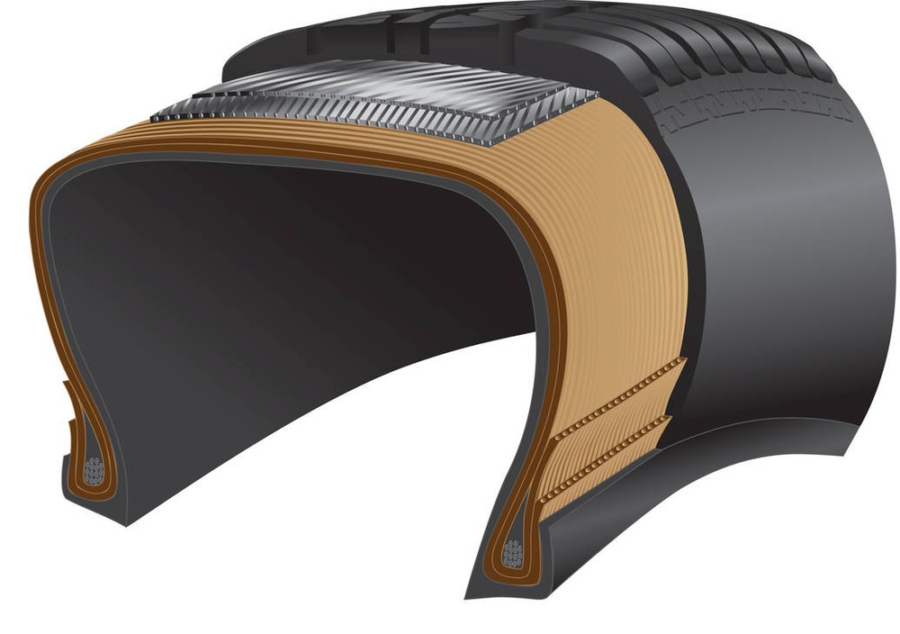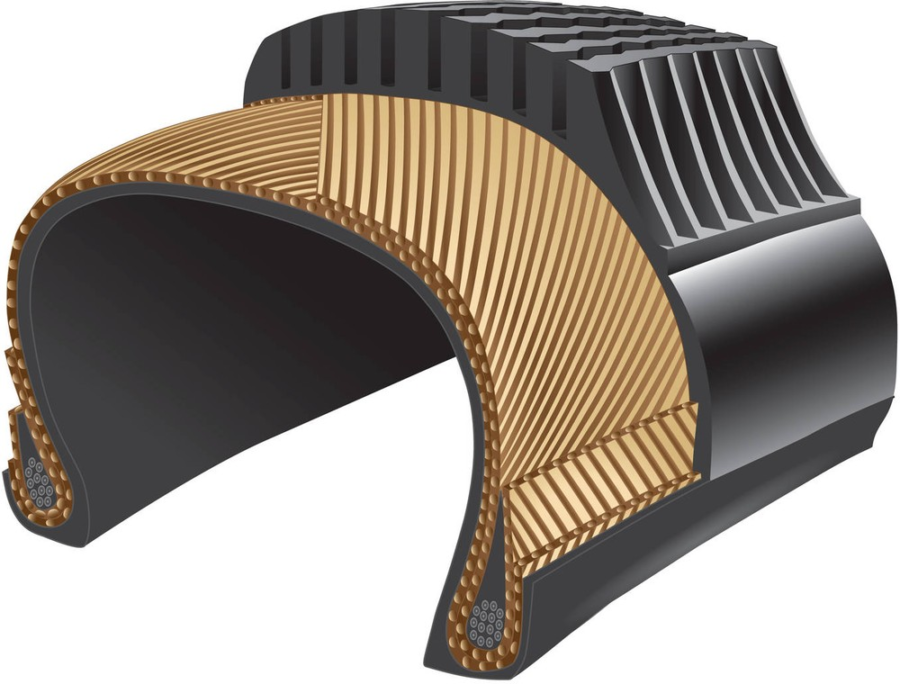Radial tires and Bias tires are two popular types of tires today, used for many different types of vehicles. However, not everyone knows the difference between these two types of tires, as well as the advantages and disadvantages of each type. In this article, we will help you distinguish Radial tires and Bias tires easily, as well as give you the advantages and disadvantages of each type.
What are Radial tires?
Radial tires were born in 1946 by the French company Michelin, and have since become a new trend in the tire manufacturing industry. Currently, most cars are equipped with Radial tires because of the advantages they bring.
Radial tires have an internal structure consisting of one or more layers of steel fibers placed in parallel together, in the same direction as the tire’s center axis (or 90 degrees to the tire’s circumferential direction). This steel fiber layer helps keep the tire tread from deforming under load, providing better road grip and less wear. Outside the steel fiber layer are rubber layers containing spikes to increase friction with the road surface. This rubber layer is also covered with a layer of nylon fiber to prevent tire expansion due to centrifugal force generated when running at high speed.

What is Bias Tire?
Bias tires are also known as fabric tires or nylon radial tires. This type of tire has an internal structure consisting of many layers of nylon or polyester fiber cross each other, at an angle of 30 to 40 degrees relative to the circumferential direction of the tire. Each layer of these curtain fibers is bonded together with rubber to form a unified block. This rubber layer also contains spikes to increase friction with the road surface. This rubber layer is usually thicker than the rubber layer of Radial tires.
Bias tires are traditional tires that have been around for a long time in the tire manufacturing industry. This type of tire is often used for heavy vehicles, construction vehicles, agricultural vehicles, motorbikes… because of its good load-bearing and puncture resistance.

The difference between Radial tires and Bias tires
Radial tires and Bias tires have clear differences in internal structure, as well as performance and durability in use. The differences between them are expressed in the following factors:
| Criteria | Radial tires | Bias Tires |
| Internal structure | Radial tires have an internal structure consisting of steel rim fibers parallel together, in the same direction as the tire’s center axis. | Bias tires have an internal structure consisting of many layers of nylon or polyester fiber cross each otherat an angle to the circumferential direction of the tire. |
| Tire characteristics | Radial tires have better flexibility, helping the tire act like a spring. At the same time, the tire also has low rolling resistance to help save fuel. | Bias tires often have higher stiffness and less flexibility, and their rolling resistance is also higher, increasing fuel consumption. |
| Thickness of rubber | The rubber layer of Radial tires is not too thick, helping to reduce heat generation and save fuel when in use. | Bias tires have thicker rubber than Radial tires. This helps increase load-bearing capacity and puncture resistance when in use. |
| Price | Due to the use of more advanced technology and materials, radial tires are more expensive. | Bias tires have a lower price and are a more economical choice for users. |
Advantages and disadvantages of Radial tires
Advantages of Radial tires
- Good heat dissipation features: Tires have the ability to dissipate heat better when operating at high speeds with loads, making them more durable in harsh conditions.
- Puncture-resistant structure: Radial tires have a fiber structure that increases tire stiffness and is more resistant to punctures than Bias tires.
- Good road holding ability: The tread makes more even contact with the road surface, providing better traction and causing the tread to wear more evenly.
- Control and stability: Wider tread (due to less rubber used) creates greater tread, providing better handling and greater stability, especially at high speeds.
- Energy saving: The tire has lower rolling resistance, helping to save more fuel than Bias tires.
- Grip on difficult terrain: For off-road, Radial tires provide better flex and more grip on rocky and sandy terrain.
Disadvantages of Radial tires
- Heavy weight: Due to the metal fiber layer structure, Radial tires are quite heavy, making the car stiffer and less smooth.
- Poor sidewall protection: Radial tires have poor sidewall protection. The sidewall of the tire can be easily damaged when it comes into contact with sharp objects.
- Noise: Due to the rather stiff structure, Radial tires tend to make louder noise during travel.
Radial tires are widely used in cars, motorbikes and personal transport vehicles. Stable driving characteristics, fuel efficiency and long life make radial tires a popular choice for general applications.
Advantages and disadvantages of Bias tires
Advantages of Bias tires
- Bias tires have a criss-cross structure, which helps them withstand loads better, especially horizontally.
- When traveling on bumpy roads or when traveling at low speeds, cars using Bias tires will provide a smooth experience.
- The tire structure is simpler, leading to a lower price than Radial tires.
- The tire has better radial traction, making the sidewall more durable when bending.
- Tires are made from many types of rubber, increasing their resistance to cuts and punctures very well.

Disadvantages of Bias tires
- Due to the structure of the tire, the wear rate of Bias tires also occurs faster than other tires.
- Bias tires have high rolling resistance, leading to increased vehicle fuel consumption.
- Under the influence of lateral sway force, Bias tires can reduce the traction ability of the wheel when turning, this also depends on the tire structure containing a lot of rubber.
Bias tires are often used in special applications such as trucks, buses, and other industrial vehicles. The rigidity and high load-carrying capacity of bias tires make them suitable for applications that require heavy loads.

id facere illo qui in sunt nostrum illum odit pariatur dolor adipisci. qui et aut dicta id labore dolorem doloremque. ipsa et ut eius sint sed distinctio vel maxime vero id incidunt ut et placeat soluta dolorem. ratione quaerat suscipit sapiente inventore officia non in ullam suscipit eligendi facilis quidem earum incidunt ea. recusandae voluptas et ipsa dicta perferendis sed eaque.